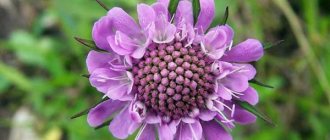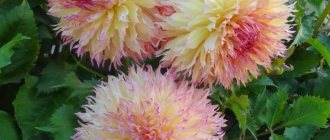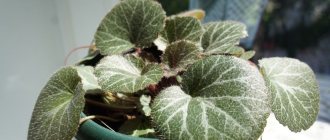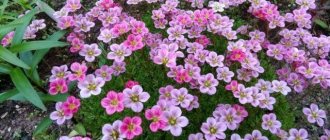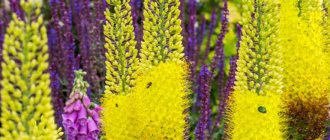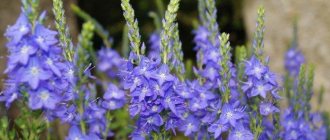Saxifraga: varieties and varieties
The name of this beautiful herbaceous plant hints at the fact that saxifrage grows and develops even in hard-to-reach places. Its sophisticated bright flowers can easily destroy the strongest stones and “settle” in the resulting cracks. The Saxifraga family is diverse and multifaceted, it has about 200 species. The beauty and unpretentiousness of saxifrage contribute to their active use in modern landscape design. The most popular today are 2 types of these perennial plants.
Saxifraga is a very unusual and attractive plant for your garden.
Soddy saxifrage. It looks like a dense turf of rosettes with dissected leaves. This species does not bloom for long, only 3-4 weeks in June. For it, planting in slightly acidic open ground rich in humus will be optimal.
Soddy saxifrage
This type of saxifrage boasts the following varieties:
- Rose-koenigen (bright pink shade);
- Purpurmontel (purple color);
- Triumph (ruby red hue).
Arends saxifrage. This plant will delight you with its rich green color all year round. Its leaves form a continuous carpet up to 15 cm high. The flowering period is late spring - early summer.
Saxifraga Arends
The most popular varieties of this saxifrage:
- Peter Pan (bright red buds);
- Sleeping Beauty (red flowers);
- Floral Carpet (a scattering of pink and purple flowers);
- Snow carpet (white buds).
In addition, there are shadow, Manchurian, reed, paniculate, round-leaved, wicker and other types of saxifrage. Some of them can be seen in the photo.
Saxifraga rotundifolia
Plant card
There are more than 400 species of saxifrage in nature, but not all of them are suitable for growing in gardens and household plots.
Botanical description:
- class: perennial (less often annual) herbaceous plant, saxifrage family;
- height: 20-50 cm, depending on the type (short or tall);
- planting time: early summer, June;
- flowering time: summer, from June to August;
- location: sunny, open areas, partial shade is acceptable;
- flower size: small, up to 3 cm, form numerous umbrella or paniculate inflorescences;
- frost resistance is high, tolerates frosts down to -40 degrees.
The perennial does not require complicated care, tolerates cold well and is suitable for growing in northern regions.
Saxifraga care
Give these stunning perennials some love and care and they will reward you with fantastic blooms. They need regular watering in moderate doses, as well as fertilizing with fertilizers (once a month). The soil around plants should always be loose and weeded.
Saxifraga will feel very good in a rock garden or rock garden.
Stone rock gardens are often laid around saxifrage bushes, which serve as a kind of protective barrier for the roots from the scorching sun and help retain moisture.
When the saxifrage fades, the above-ground part of the plant is cut off. This procedure is necessary for the appearance of new leaves. These perennial plants tolerate the winter season well. If severe frosts occur, it is better to cover the saxifrage.
Proper cultivation of saxifrage involves several important nuances in care:
- avoid heat (create relative shade);
- provide flowing watering (make drainage).
The plant can thrive with minimal care.
Roots easily!
Once planted in a rock garden, the plant must be watered well, monitor soil moisture, and shade for a month while it takes root. It is better to transplant and plant saxifrages in early spring or September, when the sun is not too hot and the air humidity is more comfortable for them.
It is more convenient to propagate saxifrage by cuttings. Carefully cut off a piece of the pillow, which is disassembled into individual rosette shoots 1-2 cm long. All lower, especially blackened, leaves of the rosettes are torn off so that the lower half of the cutting is completely freed from organic matter. In boxes filled with such a mixture as for planting saxifrage, coarse sifted sand or fine gravel is poured on top with a 1 cm layer, and the cleaned part of the cutting is buried in this top layer. The cuttings are placed in a shady place under glass or film, constant air and soil humidity is maintained in it, it should not dry out. Different species produce roots at different speeds; there is no need to rush with seedlings. A clear sign of rooting will be the appearance of new side rosettes. It is better to take saxifrage cuttings after flowering, starting at the end of May, then they have more “race” to grow roots. But cuttings cut in August-September overwinter even without roots and take root the following spring.
Propagating saxifrage by seeds is quite a troublesome task. Some species sprout and grow easily and quickly (this applies primarily to Arends' saxifrage), while others will require long-term stratification, and in the first year only a single rosette will develop. General recommendations can be as follows: surface sowing at home in loose soil in December, after two weeks of sowing at room temperature - in the refrigerator for 6-8 weeks, then on a light windowsill, in a greenhouse until shoots appear. Further care is the same as for any seedlings, only with a discount for the extremely small size.
Advertising
Reproduction of saxifrage
Saxifraga is propagated in several ways. It is grown from seeds, new representatives are obtained by rosettes or by dividing the bush.
The culture is very easily propagated by rosettes
begin propagation by rosettes only after flowering has ended. To do this, the rosettes are very carefully separated from the bush, rooted in fertile soil, and then watered. For planting, you should choose a place that will be protected from the scorching sun. Only in spring are plants planted in open ground.
Another method of propagation involves obtaining seedlings after planting the seeds of the plant in open ground. The seeds are scattered on the surface of the nutrient substrate and lightly patted with the palm of your hand. The seedlings are picked and transplanted into peat pots. Seedlings are planted in open ground together with pots in June, maintaining a distance of 7 to 25 cm.
Such propagation methods will be simple for both experienced and novice gardeners.
Saxifraga seeds
Breeding culture
The crop can be propagated by seeds, dividing the bush and cuttings:
- Growing from seeds. Sow in spring using special seedling boxes. The seed material should not be buried, but lightly sprinkled with sand. Cover using glass, building a miniature greenhouse. Shoots form in 2-3 weeks. After a month, the first true leaf will form. Sprouts can be planted in open soil when a rosette appears, which usually happens next spring.
- Dividing the bush. To do this, select a powerful bush and disconnect additional rosettes and shoots with roots and foliage, plant them in the shade and irrigate and loosen the soil around them throughout the summer season. In the spring after wintering, plant the plants in a permanent place.
- Reproduction by cuttings. There are types of crops that form long side shoots in June. They need to be cut and planted in loose, moist soil, with shade on top. Over the summer, the cuttings will take root and form medium-sized rosettes, which are covered for the winter using foliage.
With any propagation method, saxifrage flowering is observed in the 2nd year after planting in a permanent place.
Diseases and pests
Saxifraga is quite resistant to pests and diseases. However, unfavorable growing conditions or improper care can cause it to become infected or damaged by pests.
Dryness can cause damage to the plant by spider mites. In this case, a whitish web will be visible on the saxifrage. Later, the mite infects the leaves, they become covered with yellow spots, dry out and gradually die. Excessive moisture leads to the appearance of powdery mildew or damage to the leaves of the plant by rust, which is created by a variety of fungi.
Spider mite
The most dangerous pests for these perennial plants are scale insects and green aphids.
Botanical description
Saxifraga (lat. Saxifraga) is a genus of perennial plants that includes approximately 370 species. Some species are one- or two-year-old. The literal translation from Latin is “to break a stone.” Saxifraga grows its roots into stones and breaks them over time. Distributed in temperate zones and in colder places, they belong to the Saxifraga family. In indoor floriculture, only saxifrage (Saxifraga stolonifera) is grown. This plant grows well at low temperatures and low humidity. The leaves are usually round in shape, the base of the leaf is heart-shaped. Inflorescences are racemose or panicle-shaped. Saxifraga looks most beautiful when grown as a hanging plant. If you plant several rosettes in one pot, then with age they will send out hanging shoots, on which smaller rosettes will grow, thinner shoots will grow, and even smaller rosettes will grow on them.
Saxifraga: combination with other plants
Growing saxifrage will bring you tremendous pleasure. All their varieties look very original and impressive, especially in combination with other plants. Irises, muscari and many other low-growing crops can share their proximity. Amazing combinations of saxifrage with lingonberries or Chinese-decorated gentian will help fill your exterior with beauty and originality.
Saxifraga in landscape design
Possible difficulties during cultivation
The only difficulty that gardeners have when growing saxifrage is the loss of decorative value due to overgrowth. Since the regrown shoots lose their leaves, which are located closer to the ground and the soil is visible through them. Therefore, when caring for the crop, it is necessary to pay attention to renewing the bushes and dividing them using cuttings. Also, so that the plant does not lose its decorative effect, faded flowers need to be broken off along with the peduncle at the base of the turf.
Saxifraga in landscape design
With its mesmerizing beauty, saxifrage has earned its rightful place in modern landscape design. It is placed in rock gardens, on artificial slides, embankments and rocks, where it looks very stylish and impressive. This plant will instantly turn an empty and unattractive rocky place into a chic flower garden. The richness of its varieties and shades will fill the surrounding space with bright, rich colors. That is why saxifrage is absolutely irreplaceable for landscape design.
What do saxifrage seeds look like?
Photos of saxifrage seeds show that the grains are small in size, no more than 1 mm. Their shape is round, with a slight point at the tip, the shell is dark and hard.
Saxifraga from seedlings is a perennial ground cover up to 20 cm tall. It has flexible thin stems and carved leaves and bears red, yellow or white flowers. It quickly spreads throughout the area, for which it is valued by gardeners - with the help of the crop you can quickly cover empty lawns.
Types of saxifrage: photo
Outdoor care
Saxifraga is an unpretentious flower. It is enough to adhere to the rules specified in the following sections and the grass gap will retain its high decorative value for a long time.
Watering
Note to flower growers:
- Under natural conditions, saxifrage grows in areas where there is no stagnation of liquid.
- Soil moistening is carried out moderately, the intensity of watering is slightly increased during the growing season: spring and summer.
- It is not difficult to understand that another addition of liquid is required: the soil around the saxifrage is completely dry.
- Take lukewarm, settled water.
- Watering is carried out in the evening or early in the morning.
Important details:
- If it often rains in the region and the water often stagnates, then you need to build a good drainage layer in each hole or choose a different type of plant for planting on the site.
- The substrate must meet the requirements specified in the section of the article “Soil and drainage”. If the soil mixture is sufficiently loose and there is sand or gravel in the base for saxifrage growth, the risk of liquid stagnation after rains or with excessive watering is lower.
- It is simple to prevent the problem of waterlogging: saxifrage is planted on alpine slides (in the upper part and on the sides of the composition) so that water flows freely along the inclined surface.
How can you tell if a plant is getting enough water? Saxifraga grows well, there is no yellowing of the leaves. With excess moisture, the leaf plates wither, wrinkle, and a dirty white, grayish or black coating appears - a sign of rotting. You can also hear an unpleasant odor from the affected roots if you bend close to the ground.
Feeding and fertilizer
Mineral substances are added in moderation: a week after planting seedlings and twice a month during the spring and summer. It is convenient to use liquid fertilizers for indoor flowers. The concentration of the compositions is reduced by 2 times, especially for young plants.
Many gardeners make the mistake of overusing nitrogen in the hope of activating leaf growth. The result of improper feeding is negative: the underground part begins to rot, the roots die, and yellow-brown areas appear on the leaf blades. It is more useful to add a little superphosphate and peat to the hole when planting seedlings.
Many gardeners recommend fertilizers with natural ingredients: the compositions are safe and effective. Agricultural stores sell Succinic Acid (suitable for indoor and garden flowers), Biohumus - a unique eco-product based on organic matter processed using Californian red worms.
Care during and after flowering
During the period of release of inflorescences, it is useful to fertilize and increase the amount of potassium and phosphorus. Loosening and timely watering are also required. Faded buds are removed from the bush. If the grower plans to collect seeds, then he needs to wait until the fruit-box ripens, from which the planting material is taken out, dried, and put into paper bags for storage.
After flowering, you need to take care of the formation of new leaf blades. The above-ground part is cut off to stimulate vegetation in the new season. The plant overwinters in the ground, but requires shelter from a large number of fallen leaves and spruce branches.
